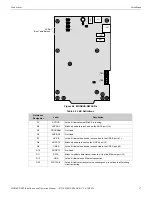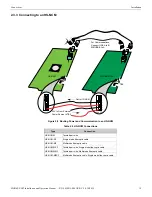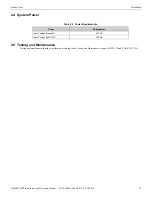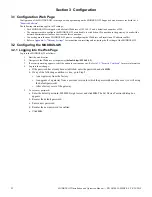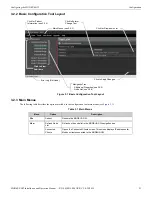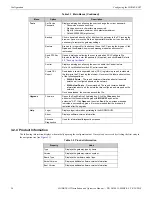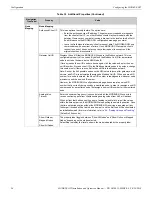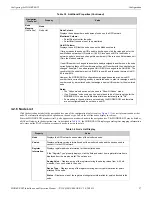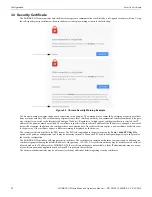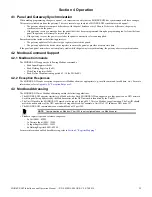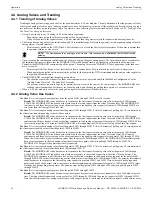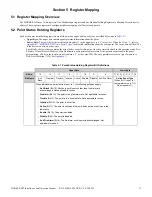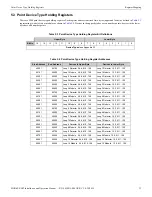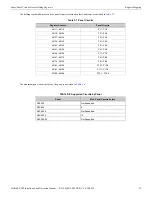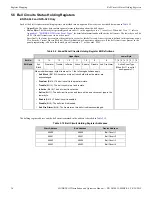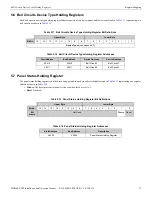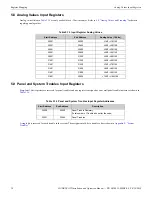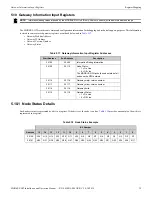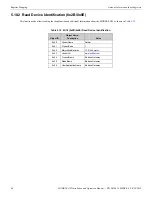
MODBUS-GW Installation and Operation Manual —
P/N LS10015-000NF-E:C2 4/30/2019
31
Section 5 Register Mapping
5.1 Register Mapping Overview
The MODBUS-GW uses 16-bit registers. One Modbus Input register and one Modbus Holding Register are allocated for each device
address. These registers represent a contiguous address mapping of all devices and points.
5.2 Point Status Holding Registers
Each of the point status holding registers are divided into an upper and lower byte as described below and in
•
Upper Byte
: The upper byte contains general status information about the point.
•
Lower Byte:
The lower byte is primarily used when bit 11 in the upper byte is a ‘1’ (or active). When bit 11 is a ‘1’, refer to
Appendix C, “MODBUS-GW Active Event Types”
for detailed information about the active point. The lower byte will be all 0’s
if the device is not in an active state.
Specifically, the lower byte contains the actual active event for this point. An active state is defined in this gateway as any Fire,
Security, Critical Process, Medical, Mass Notification, or Supervisory alarm state. If the point is not present in the panel
programming, all bits in the lower byte will contain a ‘1’ or the value FFH. The only possible active event type for zones is
Non-Fire Activation (71H). See
Table 5.1 Point Status Holding Register Bit Definitions
Upper Byte
Lower Byte
Bit No.
15
14
13
12
11
10
9
8
7 6 5 4 3 2 1 0
Bit Name
Ack
Block
Prealarm Trouble
InActive Active
Enable Disable Ack Fire Alarm
Active Event Type
(When Bit 11 is set to 1,
the register value is 71H.
When individual upper byte bits are set to 1, the following definitions apply:
•
Ack Block
(Bit 15): All events on this point, other than fire alarm, are
acknowledged. Not applicable for zones.
•
Prealarm
(Bit 14): The point is in a prealarm state. Not applicable for zones.
•
Trouble
(Bit 13): The point is in a trouble state. Not applicable for zones.
•
InActive
(Bit 12): The point is not active.
•
Active
(Bit 11): The point is active and there will be an active event type in the
lower byte.
•
Enable
(Bit 10): The point is enabled.
•
Disable
(Bit 9): The point is disabled.
•
Ack Fire Alarm
(Bit 8): The fire alarm on this point is acknowledged. Not
applicable for zones.

